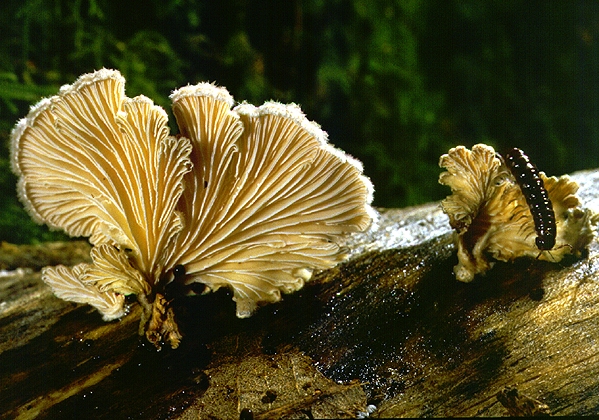
Schizophyllum commune Fr. : Fr.

Common name: None.
Description: The caps are usually fan-shaped and 26 cm in diameter. They are grey, and the surface is felty or woolly with a fine velvety down. There may or may not be a short stem, but if it is present it is formed from an extension of the cap itself. The gills radiate out from the point of attachment and are greyish or cream-coloured to pale ochre. Close examination of the gills shows that they are split along their margins and have a tendency to roll the marginal edges over the gill faces.
The spores measure 57 × 22.5 µm and are ellipsoidal, smooth and colourless.
Substratum: Schizophyllum commune always occurs on dead wood in small clusters or groups of fruiting bodies.
Distribution: This fungus occurs throughout Australia but is also known world-wide.
Notes: Schizophyllum commune has a remarkable method of withstanding desiccation during dry weather. As the fungus begins to dry out, the gills split along their margins and roll over to shield the more delicate spore-producing areas of the gill faces. When it rains, the gills unroll and spore production begins again. Old caps often have green algae growing on their surfaces; they also become quite ragged at their margins. Curiously, young caps sometimes grow from the gill surface of a very old cap. This fungus is not the only one to have the ability to recommence sporulation once wet weather returns; species of Marasmius are also able to withstand desiccation and recommence shedding spore in favourable conditions.
